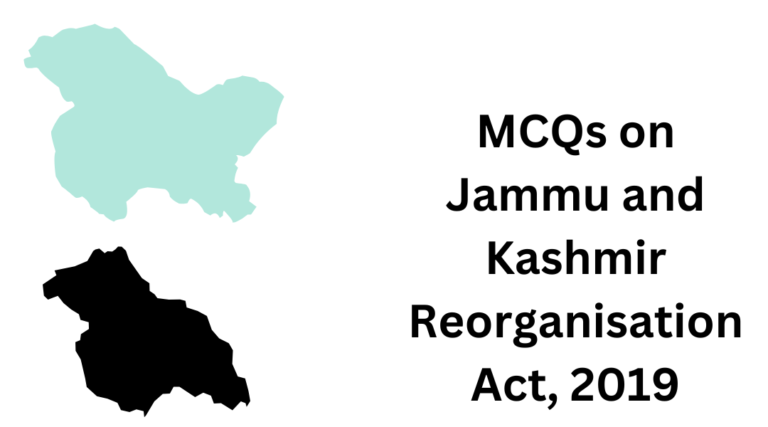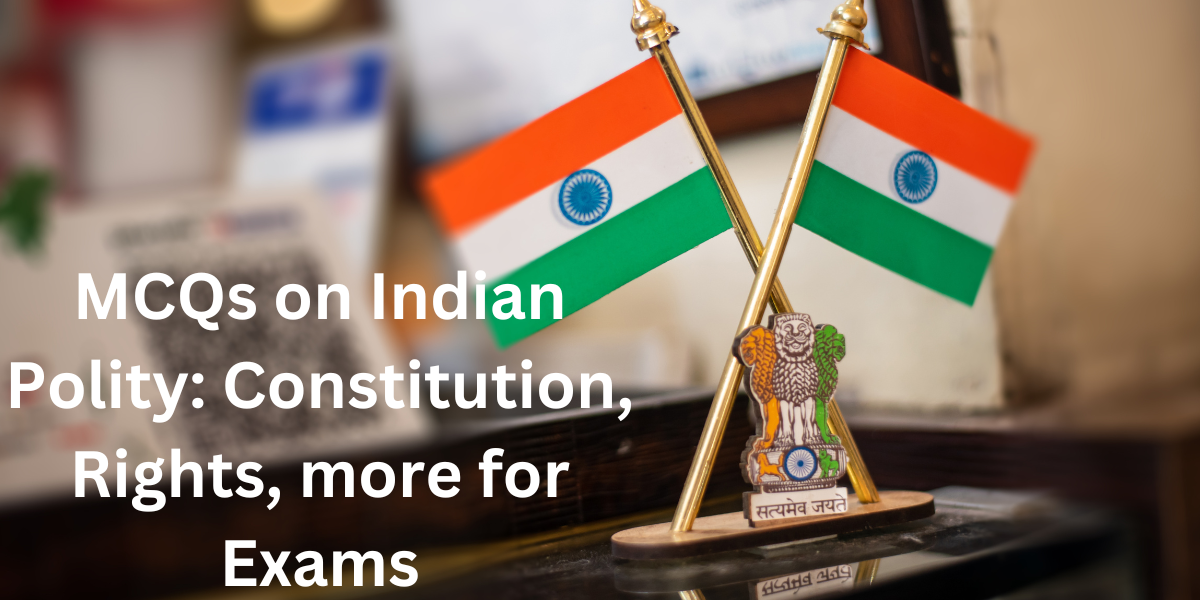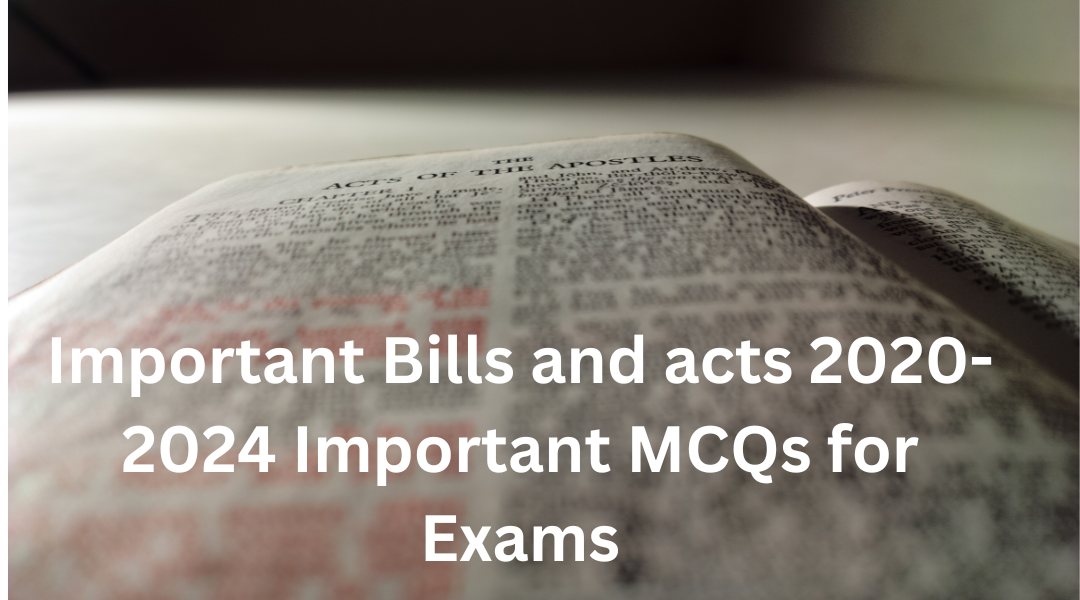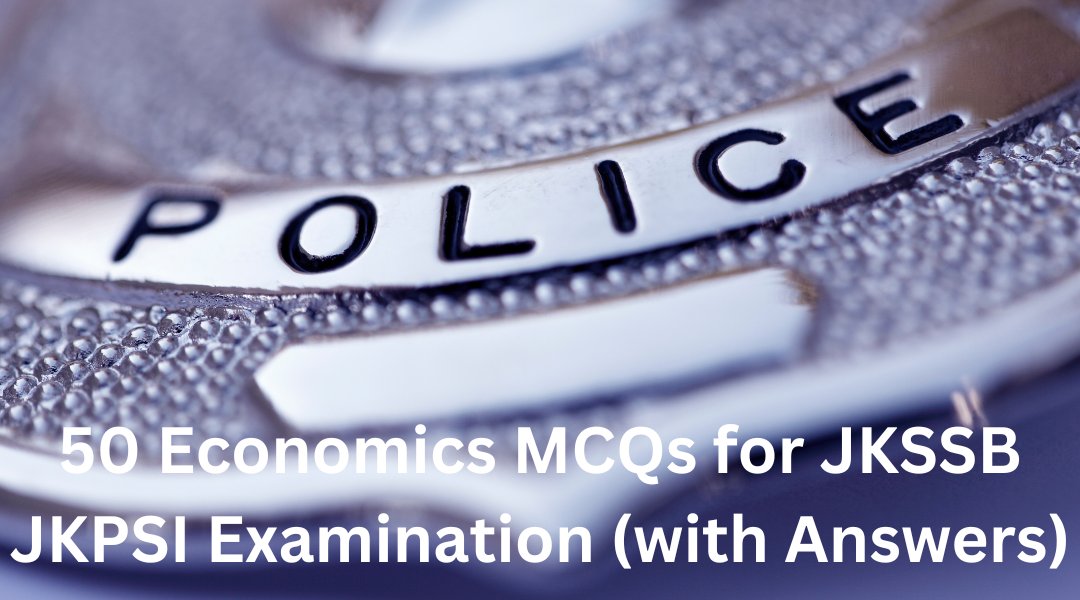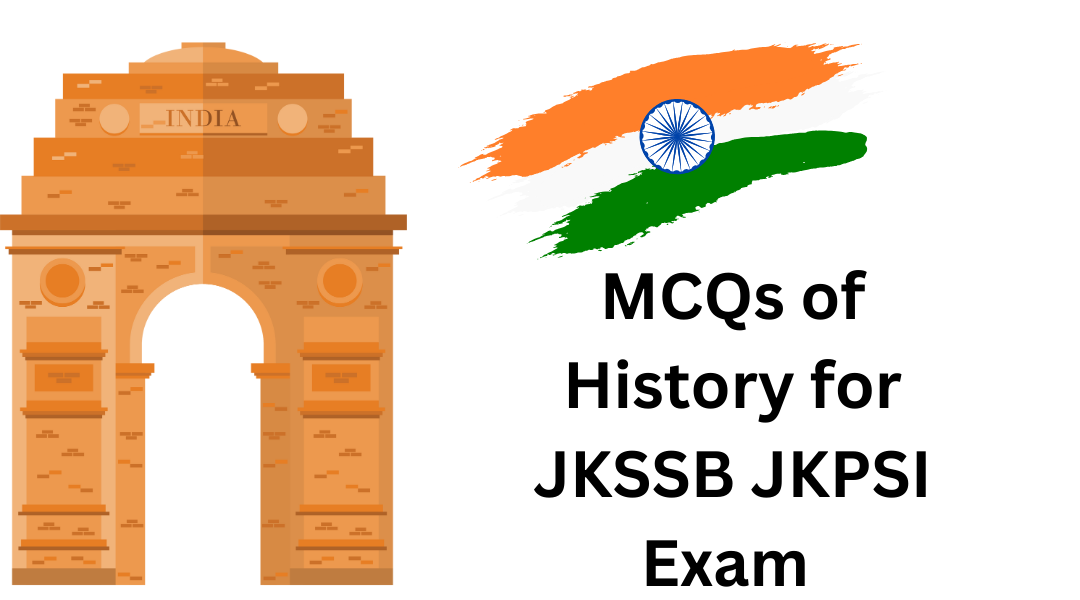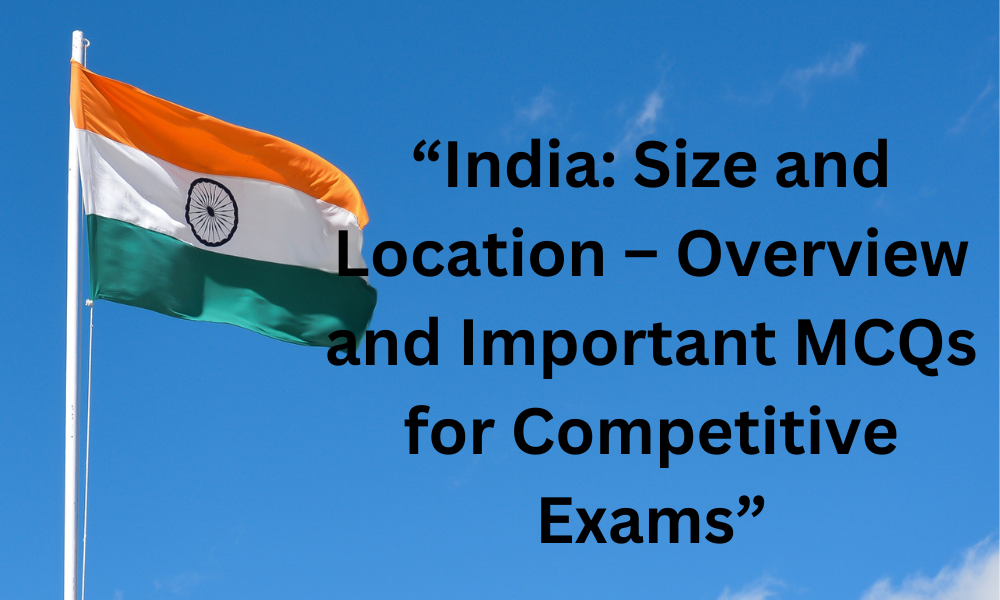- The Jammu and Kashmir Reorganisation Act, 2019, came into effect on:
- A) 15th August 2019
- B) 31st October 2019
- C) 5th August 2019
- D) 1st January 2020
- Answer: C) 5th August 2019
- Which of the following was the key provision of the Jammu and Kashmir Reorganisation Act, 2019?
- A) Reorganization of the state into two Union Territories
- B) Establishment of a separate parliament for Jammu and Kashmir
- C) Introduction of a new currency in Jammu and Kashmir
- D) Full statehood for Jammu and Kashmir
- Answer: A) Reorganization of the state into two Union Territories
- Which two Union Territories were created as a result of the Jammu and Kashmir Reorganisation Act, 2019?
- A) Jammu and Kashmir, Ladakh
- B) Jammu and Kashmir, Lakshadweep
- C) Jammu, Kashmir
- D) Jammu, Ladakh
- Answer: A) Jammu and Kashmir, Ladakh
- The Jammu and Kashmir Legislative Assembly was abolished after the Reorganisation Act of 2019 and replaced by:
- A) Jammu and Kashmir Legislative Council
- B) Jammu and Kashmir Union Territory Assembly
- C) Ladakh Legislative Assembly
- D) Jammu and Kashmir Council of Ministers
- Answer: B) Jammu and Kashmir Union Territory Assembly
- Which of the following Article of the Indian Constitution was abrogated by the Jammu and Kashmir Reorganisation Act, 2019?
- A) Article 370
- B) Article 35A
- C) Article 352
- D) Article 370 and Article 35A
- Answer: D) Article 370 and Article 35A
- Who was the President of India when the Jammu and Kashmir Reorganisation Act, 2019, came into force?
- A) Ram Nath Kovind
- B) Pranab Mukherjee
- C) A.P.J. Abdul Kalam
- D) R. Venkataraman
- Answer: A) Ram Nath Kovind
- The Jammu and Kashmir Reorganisation Act, 2019, took away the special status granted under:
- A) Article 370
- B) Article 356
- C) Article 371
- D) Article 51A
- Answer: A) Article 370
- Which body now administers the Union Territory of Jammu and Kashmir?
- A) Jammu and Kashmir Legislative Assembly
- B) Union Government of India
- C) Jammu and Kashmir High Court
- D) President of India
- Answer: B) Union Government of India
- The Union Territory of Jammu and Kashmir now has:
- A) A Legislative Assembly
- B) A Legislative Council
- C) No Legislative Assembly
- D) No Legislative Council
- Answer: C) No Legislative Assembly
- The Union Territory of Ladakh was created by the Jammu and Kashmir Reorganisation Act, 2019, without a:
- A) Legislative Assembly
- B) Legislative Council
- C) Chief Minister
- D) None of the above
- Answer: B) Legislative Council
- Which Article of the Indian Constitution was amended to implement the Jammu and Kashmir Reorganisation Act, 2019?
- A) Article 368
- B) Article 370
- C) Article 35A
- D) Article 254
- Answer: B) Article 370
- The Jammu and Kashmir Reorganisation Act, 2019, allows for:
- A) Full statehood for Jammu and Kashmir
- B) The application of all Indian laws to Jammu and Kashmir
- C) The restoration of Article 370
- D) Creation of a new currency
- Answer: B) The application of all Indian laws to Jammu and Kashmir
- Under the Jammu and Kashmir Reorganisation Act, 2019, the Union Territory of Jammu and Kashmir is headed by:
- A) A Governor
- B) A Chief Minister
- C) A Lieutenant Governor
- D) An Administrator
- Answer: C) A Lieutenant Governor
- Who was the first Lieutenant Governor of Jammu and Kashmir after the Reorganisation Act, 2019?
- A) G.C. Murmu
- B) Satya Pal Malik
- C) V. P. Singh
- D) K.K. Aziz
- Answer: A) G.C. Murmu
- The Reorganisation Act of 2019 transferred the jurisdiction over Jammu and Kashmir from:
- A) The Parliament to the State Assembly
- B) The Parliament to the President
- C) The Union Parliament to the Union Government
- D) The Indian Government to Jammu and Kashmir Legislative Assembly
- Answer: C) The Union Parliament to the Union Government
- The Jammu and Kashmir Reorganisation Act, 2019, enables the state’s legal status to be governed by:
- A) The Jammu and Kashmir Constitution
- B) The Indian Constitution
- C) The Jammu and Kashmir Constitution and Indian Constitution
- D) Jammu and Kashmir State Legislative Council
- Answer: B) The Indian Constitution
- Which is the first major constitutional change affecting Jammu and Kashmir after the Reorganisation Act of 2019?
- A) Complete disbanding of the Jammu and Kashmir Legislative Assembly
- B) Special status of Jammu and Kashmir was removed
- C) Removal of Article 371
- D) Nationalisation of Jammu and Kashmir’s economy
- Answer: B) Special status of Jammu and Kashmir was removed
- The Union Territory of Ladakh includes which areas?
- A) Jammu and Kashmir and some parts of Punjab
- B) Jammu, Kashmir, and Kargil
- C) Leh and Kargil
- D) Kashmir Valley and Jammu
- Answer: C) Leh and Kargil
- The Union Territory of Jammu and Kashmir now has a:
- A) Legislative Council
- B) Legislative Assembly
- C) Chief Minister
- D) Lieutenant Governor and a Legislative Assembly
- Answer: D) Lieutenant Governor and a Legislative Assembly
- Which power now governs the distribution of legislative powers between the Union Government and Jammu and Kashmir?
- A) Jammu and Kashmir Assembly
- B) Indian Constitution
- C) Jammu and Kashmir Legislative Council
- D) Jammu and Kashmir High Court
- Answer: B) Indian Constitution
- The Jammu and Kashmir Reorganisation Act, 2019, allowed the Union Government to:
- A) Create a separate currency for Jammu and Kashmir
- B) Apply Indian laws in Jammu and Kashmir
- C) Split Jammu and Kashmir into two separate countries
- D) Grant citizenship to non-residents
- Answer: B) Apply Indian laws in Jammu and Kashmir
- After the Reorganisation Act, the Union Territory of Jammu and Kashmir is represented in the Indian Parliament by:
- A) A separate legislative body
- B) Members of the Indian Parliament
- C) The Jammu and Kashmir High Court
- D) The Lieutenant Governor
- Answer: B) Members of the Indian Parliament
- The Jammu and Kashmir Reorganisation Act, 2019, provides for the continuation of which institution in Jammu and Kashmir?
- A) Jammu and Kashmir Legislative Assembly
- B) Jammu and Kashmir High Court
- C) Jammu and Kashmir State Bank
- D) Jammu and Kashmir Bank Limited
- Answer: B) Jammu and Kashmir High Court
- The Jammu and Kashmir Reorganisation Act, 2019, was passed by which of the following bodies?
- A) Jammu and Kashmir Legislative Assembly
- B) Indian Parliament
- C) Jammu and Kashmir State Cabinet
- D) Indian Presidential Assembly
- Answer: B) Indian Parliament
- What major consequence did the Jammu and Kashmir Reorganisation Act, 2019, have on the state’s lawmaking authority?
- A) Creation of separate tax laws
- B) Complete abolition of all local laws
- C) Extension of Indian laws to Jammu and Kashmir
- D) Only criminal laws were extended
- Answer: C) Extension of Indian laws to Jammu and Kashmir
- Which provision of the Indian Constitution was applicable to Jammu and Kashmir after the Reorganisation Act?
- A) Article 370
- B) Article 35A
- C) All Articles except Article 370
- D) Only Articles 32 and 35
- Answer: C) All Articles except Article 370
- The Union Territory of Ladakh does not have a:
- A) Governor
- B) Legislative Assembly
- C) Lieutenant Governor
- D) All of the above
- Answer: B) Legislative Assembly
- The Reorganisation Act allowed the Jammu and Kashmir government to introduce which law?
- A) Special criminal laws
- B) Special marriage laws
- C) Indian laws
- D) None of the above
- Answer: C) Indian laws
- What was the main reason behind the Jammu and Kashmir Reorganisation Act, 2019?
- A) To grant independence to Jammu and Kashmir
- B) To bring Jammu and Kashmir in line with the rest of India
- C) To create a separate government
- D) To declare war on Pakistan
- Answer: B) To bring Jammu and Kashmir in line with the rest of India
- Under the Jammu and Kashmir Reorganisation Act, 2019, Jammu and Kashmir’s finances are:
- A) Under the control of the Union Government
- B) Governed by a separate financial system
- C) Completely independent
- D) Transferred to a special fund
- Answer: A) Under the control of the Union Government
31. The Jammu and Kashmir Reorganisation Act, 2019, allows the Union Government to:
- A) Enforce martial law in Jammu and Kashmir
- B) Appoint a Governor to Jammu and Kashmir
- C) Pass any law for Jammu and Kashmir
- D) Hold elections for a new state assembly
- Answer: C) Pass any law for Jammu and Kashmir
- Which Indian state has the highest number of representatives in the Parliament after the reorganization of Jammu and Kashmir?
- A) Uttar Pradesh
- B) Jammu and Kashmir
- C) Maharashtra
- D) Kerala
- Answer: A) Uttar Pradesh
- What was the status of Article 35A after the Jammu and Kashmir Reorganisation Act, 2019?
- A) It was retained with modifications
- B) It was fully abrogated
- C) It was extended to all Indian citizens
- D) It was only modified
- Answer: B) It was fully abrogated
- Which of the following provisions of the Indian Constitution now applies to Jammu and Kashmir after the Reorganisation Act, 2019?
- A) Directive Principles of State Policy
- B) Fundamental Rights
- C) Both A and B
- D) None of the above
- Answer: C) Both A and B
- Who is responsible for making laws on matters enumerated in the Union List for Jammu and Kashmir after its reorganization?
- A) Jammu and Kashmir Legislative Assembly
- B) Union Parliament
- C) Union Ministry of Home Affairs
- D) Jammu and Kashmir High Court
- Answer: B) Union Parliament
- Which of the following bodies can exercise executive powers in Jammu and Kashmir under the Reorganisation Act?
- A) The President of India
- B) The Prime Minister
- C) The Lieutenant Governor of Jammu and Kashmir
- D) The Union Home Ministry
- Answer: C) The Lieutenant Governor of Jammu and Kashmir
- Which provision was made to ensure the security of Jammu and Kashmir’s land post-reorganisation?
- A) Implementation of land reforms
- B) Extension of Indian land laws to Jammu and Kashmir
- C) Banning foreign land purchases
- D) Ensuring only local residents can purchase land
- Answer: B) Extension of Indian land laws to Jammu and Kashmir
- The Jammu and Kashmir Reorganisation Act, 2019, resulted in the loss of the region’s:
- A) Sovereignty
- B) Special status
- C) Legislative Assembly
- D) All of the above
- Answer: D) All of the above
- The Union Territory of Jammu and Kashmir is now divided into how many districts?
- A) 10
- B) 14
- C) 22
- D) 26
- Answer: C) 22
- Under the Jammu and Kashmir Reorganisation Act, the Union Territory of Jammu and Kashmir has its own:
- A) Legislative Assembly
- B) Legislative Council
- C) Chief Minister
- D) Lieutenant Governor
- Answer: D) Lieutenant Governor
- Which international body or organization was particularly concerned about the Jammu and Kashmir Reorganisation Act, 2019?
- A) United Nations
- B) European Union
- C) SAARC
- D) ASEAN
- Answer: A) United Nations
- Which of the following was a major outcome of the Jammu and Kashmir Reorganisation Act, 2019?
- A) Repeal of Article 370 of the Indian Constitution
- B) Creation of a separate constitution for Jammu and Kashmir
- C) Complete autonomy for Jammu and Kashmir
- D) Banning all political parties
- Answer: A) Repeal of Article 370 of the Indian Constitution
- Which was the main focus of the Jammu and Kashmir Reorganisation Act, 2019?
- A) To provide full statehood to Jammu and Kashmir
- B) To bifurcate Jammu and Kashmir into two Union Territories
- C) To grant Jammu and Kashmir independence
- D) To create a special political body for Jammu and Kashmir
- Answer: B) To bifurcate Jammu and Kashmir into two Union Territories
- The Jammu and Kashmir Reorganisation Act, 2019, transferred the power of creating laws for Jammu and Kashmir from the:
- A) Jammu and Kashmir Legislative Assembly
- B) Parliament of Jammu and Kashmir
- C) Indian Parliament
- D) Jammu and Kashmir State Governor
- Answer: C) Indian Parliament
- Which of the following statements is true regarding Jammu and Kashmir after the Reorganisation Act, 2019?
- A) It is now a Union Territory with a Legislative Assembly.
- B) It is now a Union Territory without a Legislative Assembly.
- C) It has been made a separate nation.
- D) It remains a state with special status.
- Answer: A) It is now a Union Territory with a Legislative Assembly.
- Which section of the Jammu and Kashmir Reorganisation Act, 2019, deals with the administration of Ladakh?
- A) Section 10
- B) Section 18
- C) Section 28
- D) Section 30
- Answer: B) Section 18
- After the Reorganisation, which Indian law applies to Jammu and Kashmir for the first time?
- A) Jammu and Kashmir State Laws
- B) Indian Penal Code (IPC)
- C) The Jammu and Kashmir Constitution
- D) Foreigners’ Act
- Answer: B) Indian Penal Code (IPC)
- The Jammu and Kashmir Reorganisation Act, 2019, has made Jammu and Kashmir subject to:
- A) Special laws under Indian Constitution
- B) General laws under Indian Constitution
- C) Independent laws
- D) None of the above
- Answer: B) General laws under Indian Constitution
- After the Jammu and Kashmir Reorganisation Act, 2019, the Union Territory of Jammu and Kashmir is directly governed by:
- A) The Governor of Jammu and Kashmir
- B) The Lieutenant Governor of Jammu and Kashmir
- C) The Prime Minister
- D) The Chief Minister of Jammu and Kashmir
- Answer: B) The Lieutenant Governor of Jammu and Kashmir
- Which of the following regions is not included in the Union Territory of Jammu and Kashmir after the Reorganisation Act, 2019?
- A) Jammu
- B) Kashmir
- C) Ladakh
- D) Gilgit-Baltistan
- Answer: D) Gilgit-Baltistan
These MCQs provide a comprehensive overview of the Jammu and Kashmir Reorganisation Act, 2019, covering its key aspects, consequences, and legal implications. I hope these help with your preparation for the JKPSI exam!
Also Read: MCQs of History for JKSSB JKPSI Exam
You may also like to Read This: Basic Computer MCQs with Answers

Asif Iqbal Wani is a professional content writer with over 5 years of experience in the education niche. With a speciality for content creation that’s thought-provoking and engaging, Arun specializes in making study guides and resources for exams and curriculum-based content.
With a zeal for learning, Asif comes across as a vibrant educator who simplifies the most difficult concepts into information that is easily digested, enabling learners to achieve success academically. His commitment to accuracy and creativity ensures that every piece of content not only teaches but also inspires.
Asif is committed to providing high-quality impactful content that works well for different student and faculty requirements.
